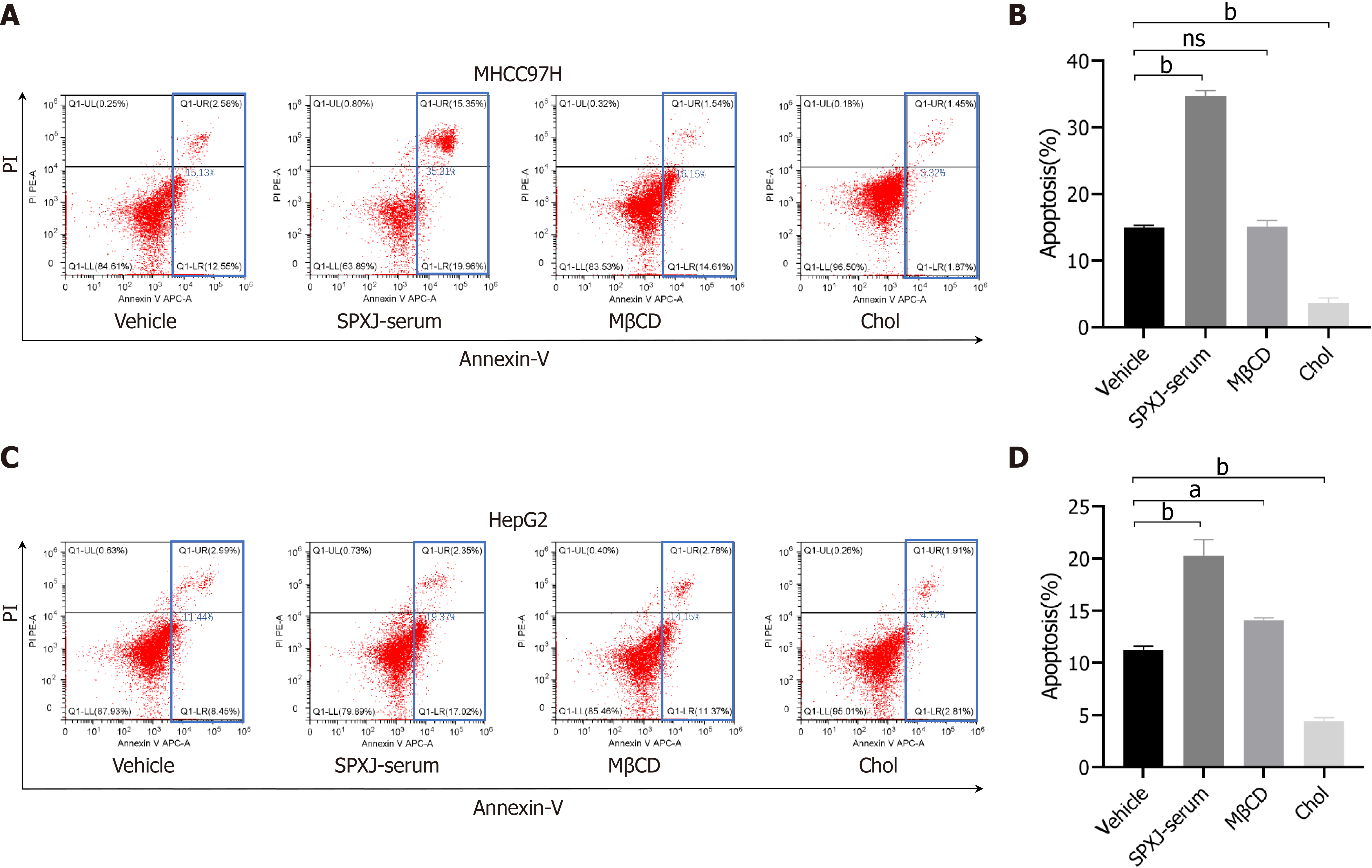Copyright
©The Author(s) 2024.
World J Gastrointest Oncol. Jun 15, 2024; 16(6): 2727-2741
Published online Jun 15, 2024. doi: 10.4251/wjgo.v16.i6.2727
Published online Jun 15, 2024. doi: 10.4251/wjgo.v16.i6.2727
Figure 4 Flow cytometry results show the percentage of apoptotic hepatocellular carcinoma cells in the vehicle, Shi-pi-xiao-ji-serum, methyl-β-cyclodextrin, and water-soluble cholesterol groups of MHCC97H cells and HepG2 cells based on the annexin V/PI double-staining.
A and B: Flow cytometry results show the percentage of apoptotic hepatocellular carcinoma (HCC) cells in the vehicle, Shi-pi-xiao-ji (SPXJ)-serum, methyl-β-cyclodextrin (MβCD), and water-soluble cholesterol (Chol) groups of MHCC97H cells based on the annexin V/PI double-staining; C and D: Flow cytometry results show the percentage of apoptotic HCC cells in the vehicle, SPXJ-serum, MβCD, and Chol groups of HepG2 cells based on the annexin V/PI double-staining. The results are expressed as means ± SEM (n= 3). aP < 0.01, bP < 0.001 and ns: P > 0.05. SPXJ: Shi-pi-xiao-ji; MβCD: Methyl-β-cyclodextrin; Chol: Water-soluble cholesterol; PI: Propidium iodide.
- Citation: Jian HY, Liang ZC, Wen H, Zhang Z, Zeng PH. Shi-pi-xiao-ji formula suppresses hepatocellular carcinoma by reducing cellular stiffness through upregulation of acetyl-coA acetyltransferase 1. World J Gastrointest Oncol 2024; 16(6): 2727-2741
- URL: https://www.wjgnet.com/1948-5204/full/v16/i6/2727.htm
- DOI: https://dx.doi.org/10.4251/wjgo.v16.i6.2727









